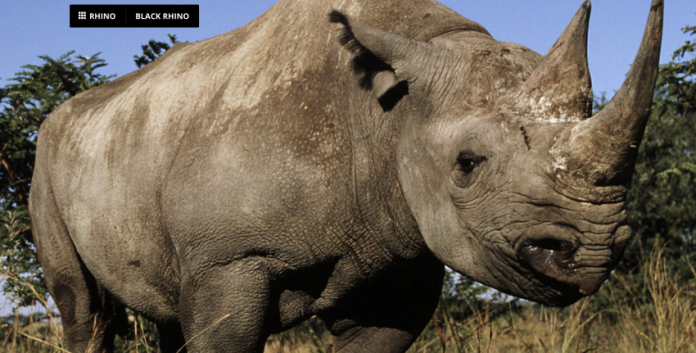How many species of rhino exist?
There are 5 distinct species of rhinoceros
Gain a better understanding of the five distinct species of rhinoceros.
Rhinos used to be widespread over Europe, Asia, and Africa, and early Europeans depicted them in cave paintings since they were familiar with these animals at that time.
At the turn of the 20th century, there were approximately 500,000 rhinos living throughout Africa and Asia.
There are currently five species of living rhinos, despite the fact that there have been close to 100 known species of rhinoceros over the course of the eons.

There are two different species of rhinoceros in Africa, while there are three different kinds in Asia. The black rhinoceros (Diceros bicornis) and the white rhinoceros (Rhinoceros simum) are both found in Africa.
Rhinos often live in communities alongside a variety of other important plants and animals. The conservation of greater one-horned rhinos contributes to the conservation of the aforementioned other species.
These rhinos also serve as a symbol of national pride in the countries in which they are found, which motivates the local communities to take better care of their surrounding environment.
These communities also gain benefits from the revenue that is generated from ecotourism related to rhinos.
Rhinos Size and Weight:
The size and weight of rhinos can vary greatly from species to species. Their height can range anywhere from 1 to 3 meters (3.3 to 10.1 ft).
The Sumatran rhino is the smallest of the rhinoceroses that are still alive today.
Their height can range anywhere from 3.3 to 5 feet, their length can range anywhere from 6.5 to 13 feet, and their weight can range anywhere from 1,320 to 2,090 pounds.
The smaller of the two kinds of rhinoceros found in Africa are the black rhinos.
Their height is anywhere from 5.2 feet to 5.2 feet, and their weight ranges anywhere from 1,720 pounds to 3,080 pounds.
The white rhinoceros is the larger of the two kinds of rhinoceros found in Africa. It can weigh between 3,080 and 7,920 pounds and can stand between 5 and 6 feet tall.
Javan rhinoceroses can range in size from 4.6 to 5.8 feet in height and anything from 1,984 to 5,071 pounds in weight.
View this post on Instagram
The greater one-horned rhinoceros is the largest of the rhino species, ranging in height from 5.75 to 6.5 feet and in weight from 4,000 to 6,000 pounds. Its height can range from 5.75 to 6.5 feet.
Rhinoceros Diet:
There are five different kinds of rhinoceros, but they are all herbivores that consume mostly plants. They spend the most of their time rummaging through their natural habitat and grazing in order to find edible plants and grasses to consume.
The particular kinds of food that each species consumes are determined by the ecosystem in which they live as well as their geographic location.
Rhinos are one of the few megaherbivores, or herbivores that consume more than 2,000 pounds of vegetation annually, that are still alive today.
Rhinos Habitat:
Rhinos can be found in a variety of habitats, some of which include tropical and subtropical grasslands, savannas and shrublands. They can also be found in tropical moist forests, deserts, and shrublands.
The species determines the habitat that they inhabit. For instance, the habitat of the Sumatran rhinoceros consists of deep tropical and subtropical forests both in the highlands and the lowlands.
On the meanwhile, the white rhinoceros can be found in the grasslands of Africa.
Geography:
Rhinos previously inhabited vast swaths of Africa and Asia, but in recent years, their habitat has shrunk by a significant amount across both continents.
There are known populations of rhinos in Borneo and Sumatra, as well as in Namibia, the Eastern Himalayas, and East Africa’s Coastal region.
The species determines where they can be found. For instance, the Sumatran rhinoceros can be found on both the island of Sumatra and the island of Borneo in Indonesia.
Both the white rhino and the black rhino can be found in their natural habitat in Africa.
Rhino Lifespan:
It depends on the species of rhinoceros how long they live. The average lifespan of a rhino is between 40 and 45 years.
Threats Affecting Rhinoceros:
The Javan rhinoceros is the most endangered of the 5 species of rhinoceros and can be found in just one protected area across the entire planet.
The species is in grave danger of going extinct as a result of natural disasters, the destruction of its habitat, infectious diseases, illegal poaching, and the possibility of inbreeding.
The Javan rhinoceros and the Sumatran rhino both vie for the distinction of the world’s most endangered species of rhinoceros.
Sumatran rhinos may still be around in larger numbers than Javan rhinos, but they face a greater risk of extinction as a result of the destruction and fragmentation of their natural habitat.
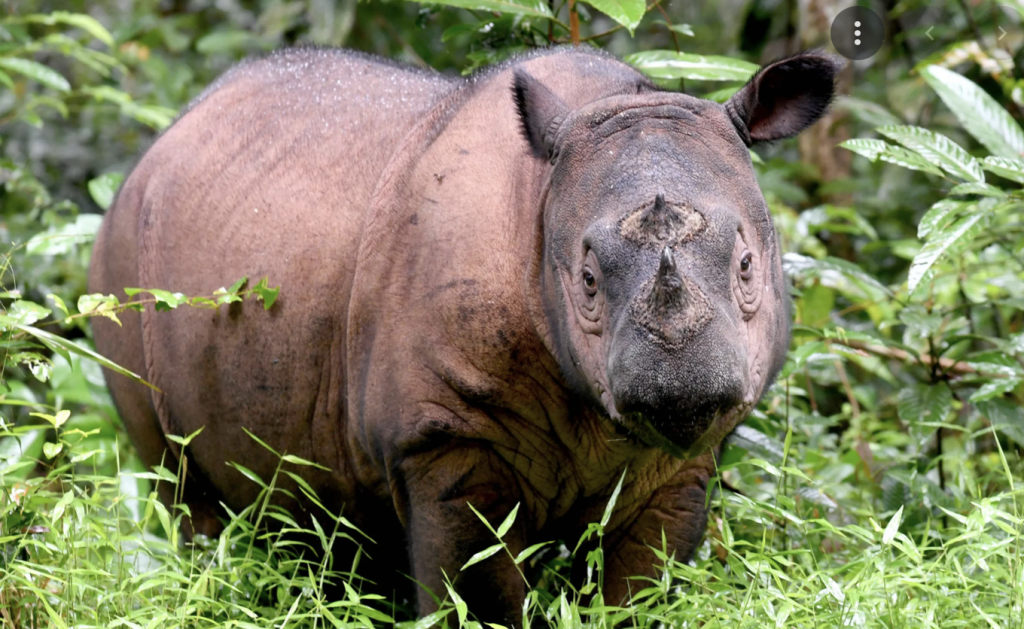
The remaining animals live in small, fragmented populations that are not viable, and because there are fewer opportunities for them to discover each other and breed, the population is continuing to drop.
During the past 15 years, reproduction has been achieved by only two of the captive females.
The greatest danger that the one-horned rhinoceros faces is the act of poaching. Traditional Asian medicine makes use of their horn in various preparations.
Another big risk is the destruction of habitat because of rising human population levels.
Both black and white rhinos face their greatest danger from poaching and other illegal activities in Africa.
Poaching for rhino horn has reached epidemic proportions over the past several decades, bringing the white rhino to the brink of extinction.
Loss of habitat is another significant risk factor for both species.
Here are the Top 5 Rhino Species
1. The Javan Rhino

The Javan rhinoceros is the most endangered of the five species of rhinoceros because there are only about 60 of them left, and they can only be found in Ujung Kulon National Park on the island of Java in Indonesia.
There was a time when Javan rhinos could be found all over northeast India and Southeast Asia.
The only Javan rhino in Vietnam was killed by poachers in the year 2010.
This species is a dingy gray tint, and it has a single horn that can grow to be approximately 10 inches long. It appears as though the creature’s skin is armored due to the presence of a number of loose folds.
The Javan rhino is quite similar in appearance to the bigger one-horned rhinoceros, which is a near relative of the Javan rhino, but the Javan rhino has a considerably smaller head and fewer obvious skin folds.
The population that can be found in Ujung Kulon National Park is the only one that offers any chance of survival for a species that is dangerously close to going extinct.
Up to the late 19th century and the early 20th century, Javan rhinos could be found on the island of Sumatra, as well as on the mainland of Southeast Asia, the Sunderbans, and northeastern India.
If we are unable to maintain the population in Java, the species as a whole will perish.
The Javan rhinoceros is the species of rhinoceros that is most in risk of extinction, and its population is decreasing at a rate of 1% every year.
Poaching for their horns is still one of the primary dangers to their continued existence, which helps to explain why it is one of the most endangered animals in the world.
If you wish to do something to assist with their protection, you can make a financial contribution or encourage your friends and family members to do the same thing.
2. The Sumatran Rhino
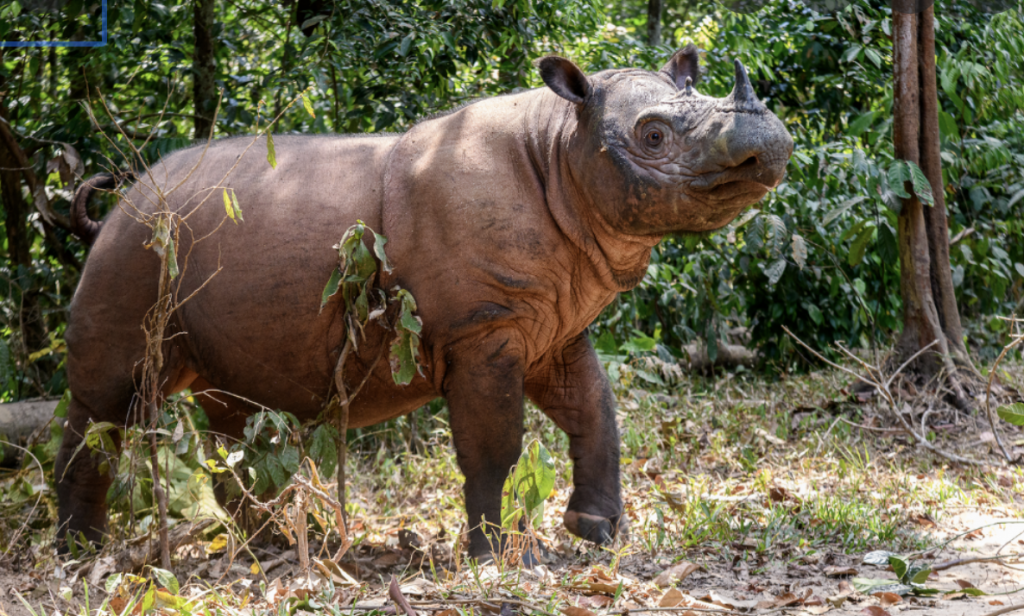
The Sumatran rhino is one of the world’s most critically endangered species and there are only around 100 left in the world.
Poaching for their horn has led to a dramatic decrease in their population over the years, and currently they face extinction unless we take action quickly.
Various conservation initiatives are underway to help protect them from extinction, but if you want to make a real impact, learning about their plight and getting involved is essential.
There are various ways you can help – donating money, campaigning for change online or even by participating in protests organised by conservation groups near where you live.
THIS IS THE LAST CHANCE WE HAVE TO SAVE THE SUMATRAN RHINOS
The few remaining Sumatran rhinos are battling to survive in the deep, humid rainforests of the Indonesian islands of Sumatra and Borneo.
This rhino is so uncommon, with less than 80 individuals surviving in dispersed subpopulations, that only a few of people have ever seen one in the wild.
Initial causes of the species’ decline were habitat loss and poaching for their horns, both of which exist today. Despite continuous protection, extinction is imminent for the species.
Sumatran rhinos have been isolated in tiny regions, reducing the likelihood of breeding-age animals coming into contact with one another. There are simply not enough newborn rhinos being born.
THE ALLIANCE
The only way to bring the Sumatran rhino back from the verge of extinction is to consolidate the fragmented wild populations into managed breeding facilities constructed expressly for their care and propagation, according to Indonesian government officials and rhino experts.
Without this assistance, these rhinoceroses will go extinct within a few decades.
We recently partnered with the Indonesian government, National Geographic, the World Wildlife Fund, the International Union for the Conservation of Nature, and Global Wildlife Conservation to save the Sumatran rhino from extinction.
The initiative was designed to support the national Sumatran rhino breeding program of the Indonesian government.
3. The Black Rhino
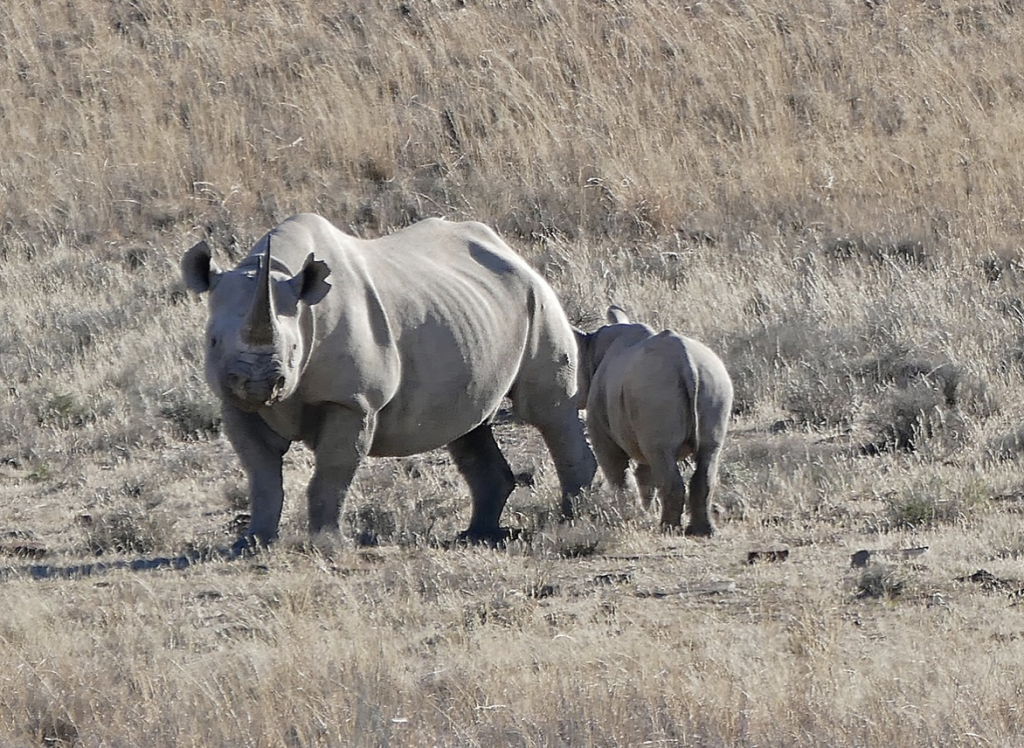
Rhino poaching is one of the biggest conservation threats facing black rhinos.
Poachers hunt these animals for their horns, which are believed to have medicinal properties in some cultures.
The black rhinoceros is the smallest of the two kinds of African rhinoceros. White and black rhinos are distinguished from one another by their hooked upper lip.
This distinguishes them from the white rhino, whose upper lip is square.
Black rhinos are browsers as opposed to grazers, and their hooked upper lip enables them to consume leaves from bushes and trees. They typically have two horns, with the occasional addition of a third, little posterior horn.
As a result of European hunters and settlers, black rhino populations dropped substantially over the 20th century.
Between 1960 and 1995, the number of black rhinos plummeted by 98%, to less than 2,500.
Since then, the species has made a remarkable recovery after being on the verge of extinction.
The number of black rhinos has more than doubled from its historic low 20-years ago to approximately 5,500 now, as a result of ongoing conservation efforts across Africa.
However, the black rhino is still regarded to be critically endangered, and there is still a great deal of effort to be done to increase its population to even a fraction of its former size and to ensure that it remains there.
Wildlife crime, in this case poaching and illegal trade of rhino horn, continues to plague and jeopardize the species’ recovery.
Since 1990, the population of black rhino has decreased by 95%, and as of 2016 there were only 2,000 left in the world – down from over 20,000 just two decades ago.
If you’re thinking of buying or selling a horn – don’t! Not only will this help support poachers, but it also sends out a negative message about rhinos and encourages people to kill them.
You can help protect these endangered animals by not supporting any kind of illegal wildlife trade.
4. The Greater one-Horned Rhino
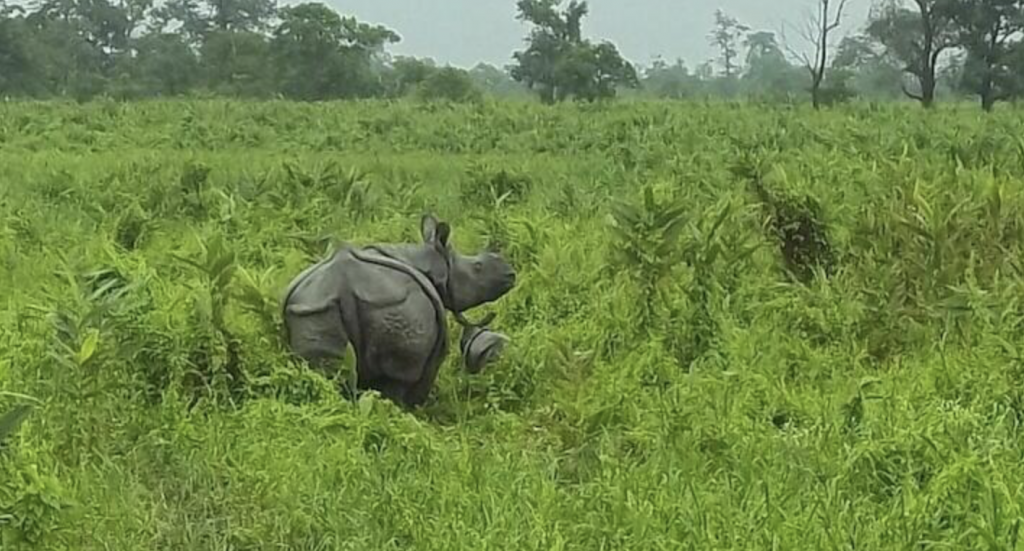
The greater one-horned rhino is one of the world’s most endangered rhinos and their population is on the decline.
The largest member of the rhinoceros family is the bigger one-horned rhino, sometimes known as the “Indian rhino.”
The decline of rhino populations can be attributed to hunting for sport and the culling of rhinos as agricultural pests.
Rhino populations were once abundant throughout the whole northern portion of the Indian subcontinent. This brought the species to the brink of extinction, and by the beginning of the 20th century, there were only approximately 200 greater one-horned rhinos living in the wild.
The comeback of the greater one-horned rhinoceros is one of the most remarkable examples of successful conservation efforts in Asia.
The greater one-horned rhinoceros was brought back from the brink of extinction because to the stringent protection and management practices implemented by Indian and Nepalese wildlife officials.
There are approximately 3,700 rhinos living in the Terai grasslands of Nepal and the northeastern part of India today.
The greater one-horned rhinoceros can be distinguished from other species of rhinoceros by its solitary, dark horn, which can range in length from 8 to 25 – inches, and its gray-brown hide, which features skin folds that give it the appearance of being armor-plated.
The species mostly lives alone, with the exception of situations in which adult males or rhinos that are getting close to reaching adulthood congregate at wallows or to graze.
Males have home ranges that are only hazily defined, are not effectively protected, and frequently overlap with those of other males.
They do most of their eating by grazing, and eating grasses, leaves, and branches of shrubs and trees, fruits, and aquatic plants that make up their diet make up almost all of what they consume.
Poaching for their horns is the main reason for this, as horn prices have increased exponentially in recent years due to growing demand from China and other countries in East Asia.
You can help reduce poaching by educating yourself and others about the importance of conservation – By supporting conservation efforts you’re helping ensure that this magnificent animal will continue to thrive into the future.
5. The White Rhino

The Ceratotherium simum, more often known as the white rhinoceros, white rhino, or square-lipped rhinoceros, is the largest species of rhinoceros that is still alive today.
It is the most sociable of all rhino species and has the widest mouth of any rhino, which it uses for grazing.
There are two subspecies of the white rhinoceros:
The southern white rhinoceros, which was estimated to have between 19,682 and 21,077 alive in the wild in the year 2015, and the far more uncommon northern white rhinoceros.
Poaching is the primary factor contributing to the dwindling population of white rhinos.
In the past four years, there has been a drop in population of over 12%, from an estimated 18,067 people to fewer than 16,000 people presently.
The white rhinoceros, together with the bigger one-horned rhino, which is nearly the same size as the white rhinoceros, is the second largest terrestrial mammal after the elephant.
There are two separate subspecies of this animal, but the only group that continues to thrive is the southern white rhino (Ceratotherium simum simum).
Poaching has caused the extinction of the northern white rhino (Ceratotherium simum cottoni), and there are just two females left living in a sanctuary in East Africa.
Did the white rhino go extinct?
After more than a century of protection and management, they are currently categorized as Near Threatened, and there are approximately 18,000 animals in protected areas and private game reserves.
They are the only non-endangered species among the five rhinoceros species. White rhino social structures are intricate.
Conclusion
We hope you enjoyed this article… What are your thoughts?
Please feel free to share with us in the comments section below.



